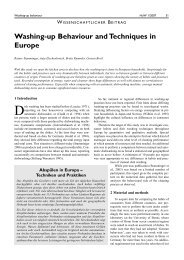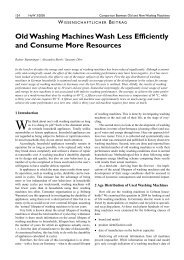Development of a novel mechatronic system for mechanical weed ...
Development of a novel mechatronic system for mechanical weed ...
Development of a novel mechatronic system for mechanical weed ...
Create successful ePaper yourself
Turn your PDF publications into a flip-book with our unique Google optimized e-Paper software.
Materials and methods<br />
(PFM). As the names imply, either the width <strong>of</strong> constant frequency pulse signals<br />
or the frequency <strong>of</strong> constant width pulse signals can tell the motor to apply more<br />
or less power at any given time.<br />
The actual motor combined with a servo drive can theoretically be <strong>of</strong> any type.<br />
Earlier, direct current (DC) motors were generally combined with a servo drive<br />
because the only type <strong>of</strong> control <strong>for</strong> large currents was through SCRs. However,<br />
alternating current (AC) motors, the most commonly used motors in industrial<br />
applications, become used more <strong>of</strong>ten as transistors became capable <strong>of</strong><br />
controlling large currents and switching the large currents at high frequencies. If<br />
a motor is intended to be used as a servo motor it needs to be able to operate<br />
at range <strong>of</strong> speeds without overheating, to operate at zero speed and retain<br />
sufficient torque to hold a load in position and to operate at very low speed <strong>for</strong><br />
long periods <strong>of</strong> time without overheating.<br />
In stepper motors, a reasonable alternative to servo motors, the drive receives<br />
low-level signals from the indexer or control <strong>system</strong> and converts them into<br />
electrical (step) pulses to run the motor. A stepper drive is a typical example <strong>of</strong><br />
an open loop <strong>system</strong>. Generally, stepper motors are limited to small torque and<br />
speed requirements.<br />
The permanent magnet DC (PMDC) motor is the best and predominantly used<br />
motor <strong>for</strong> start-stop, servo device applications. The permanent magnets<br />
produce a constant field flux at all speeds and there<strong>for</strong>e a linear speed torque<br />
curve. Other advantages are high starting torque, small frame, light weight, and<br />
linear and predictable behaviour.<br />
A unique aspect <strong>of</strong> a servo motor is its feedback control, closed loop function.<br />
Motors controlled in open loop, comprising most simple motors including<br />
stepper motors, operate under the assumption that motion has taken place<br />
once the control signal has been sent. In case the motor’s move is disabled, <strong>for</strong><br />
example due to jamming, the controlling unit <strong>of</strong> the open loop <strong>system</strong> does not<br />
receive in<strong>for</strong>mation about the problem and cannot make any correction. Closed<br />
loop <strong>system</strong>s contain a feedback device that can detect whether the desired<br />
effect on the load has taken place, and subsequently alert the control device to<br />
49





